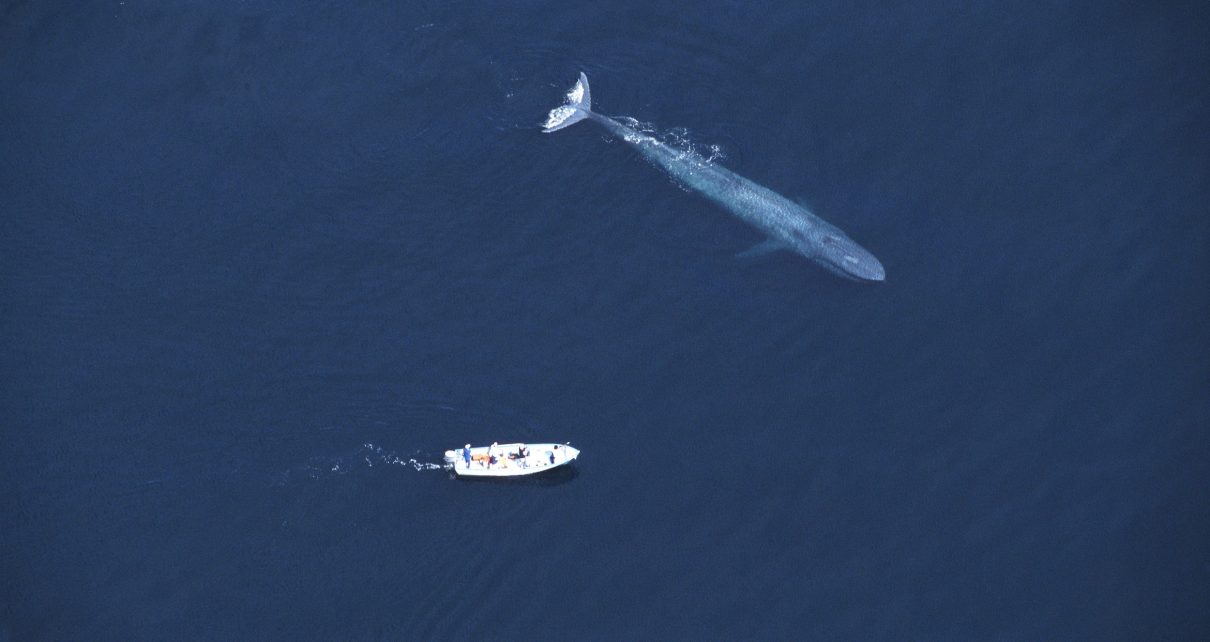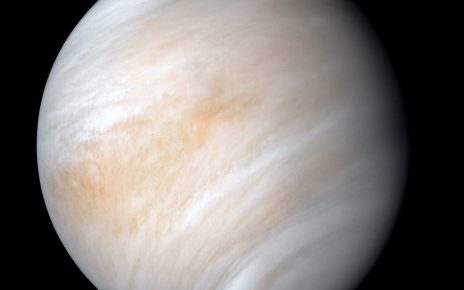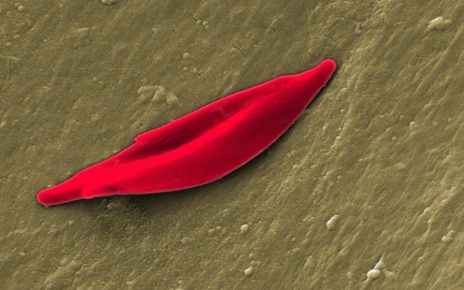“We are truly living in a time of giants.” Lofty language like this doesn’t happen often in scientific literature. But the person who wrote them, biologist Jeremy Goldbogen, understands: When it comes to writing about whales, the scale and mystery of their lives can be difficult to overstate.
For the past two decades, Goldbogen and his network of collaborators have been piecing together a puzzle: Whales are the largest animals to have ever lived—but why? The puzzle pieces were out of reach until the turn of the current century, and in only the last few years have there been enough in place to grasp the bigger picture.
We now understand that whale gigantism is tied closely to two things: one, their choice of prey, and two, the coincidence of their evolution with a global increase in the upwelling of nutrient-rich water from the depths of the ocean.
The first baleen whales to evolve filter-fed upon plankton—essentially, tiny, drifting sea bugs. But a more recent lineage, known as the rorquals, developed a remarkable new feeding strategy known as “lunge feeding”, which allowed them to access a different type of prey: swarming schools of small fish and krill. The mechanics of this strategy align such that bigger mouths (and hence larger bodies) profit more from lunge feeding than smaller mouths or alternative modes of feeding.
And so the advent of lunge feeding (about seven to 10 million years ago) provided the energetic incentive structure for enormous size, and a sudden rise in ocean upwelling (approximately five million years ago) provided them with ample prey supply: a serendipitous recipe for bigness.
Suddenly, the rorquals had the prey supply they needed to grow. This is why the evolution of the Earth’s largest animals is a remarkably recent event. This truly is a time of giants: The Age of Whales.
But there’s an elephant in the room. Actually, it’s a blue whale.
It may be clear why rorqual whales are so large in general, but of these giants, why are blue whales so much larger than all the others? A blue whale can grow to more than 100 feet long and weigh over 150 tons. Compare this to the fin whale, the second largest animal ever: typically 80 feet long and 60 tons—less than half the blue whale’s weight. What’s going on here? What makes blue whales so special?
Answering this question, I believe, will require a few more puzzle pieces, particularly perspectives from evolutionary ecology. No single species can be understood in isolation; it evolved alongside close relatives in the context of an ever-changing environment.
The rise of lunge feeding in the rorquals was momentous. New varieties of prey were suddenly available to the lineage, and the ocean had never reckoned with a predator quite like them. But rorquals did not feed in a vacuum. Other predators—fish, seabirds and seals—were already working the prey field, and competition was fierce.
The only relief from this pressure was specialization. Not all types of swarming prey were the same, and becoming a specialist of a single kind afforded a crucial competitive edge. Some rorquals learned to target schooling fish. Some doubled-down on plankton. Others became generalists, specializing in dietary flexibility and opportunistic prey switching.
Dozens of rorqual species have arisen and died off since the advent of lunge feeding. The few lineages that persist today are a mere shadow of that old diversity, and they persist only because their specialties allow them to coexist.
And of all present-day rorquals, blue whales are arguably the most specialized. They eat krill and only krill, with very few exceptions. This, as we will see, is the key to their superlative size.
To specialize in krill is no small task. Krill can be superabundant, but only within certain isolated regions of the world ocean, such as upwelling zones and polar oceans. To stumble upon booms of krill yet survive the inevitable busts, blue whales need extreme mobility and large energy reserves. They achieve these with enormous size, sleek bodies, and small, hydrodynamic flippers. Such bodies travel more efficiently through water, and thick stores of energy-rich blubber pile on helpful momentum.
But once found, krill are not so easy to catch. A successful lunge has to be executed at speed and with an element of surprise. Some whales can outmaneuver krill, such as the long-flippered humpback whale, but blue whales have had to sacrifice maneuverability for the sake of long-range efficiency. In the arms race against krill escape, the blue whale’s best option is a larger mouth, which it achieves with a larger body. Yet again, the solution is size.
But ecological specialization is a double-edged sword in a zero-sum world. Investment in one facet of livelihood comes at the cost of others. Specialization offers some security, but it also introduces fragility. Any change to the ecosystem will tend to hurt the specialists first and worst. And the more specialized a predator becomes, the more difficult it is for it to backtrack. Instead the predator is likely to find more success investing in deeper ecological entrenchment. In this way, selection for specialization quickly becomes circular.
Blue whales literally embody this conundrum of specialization. To compete for krill, they have evolved for long-distance efficiency at the cost of maneuverability. Such a body is great for what it does, but it would flounder in vying for any other prey. The other rorquals are just too agile, with far more prey options and fewer energetic needs. And so, the blue whale must consign itself even more resolutely to a dependence upon krill.
There’s another catch to all of this. Bigness is key to the blue whale’s diet, but bigness also adds to the whale’s overall energy budget. A bigger body requires more food, which even fewer portions of the world ocean can support, thus requiring a bigger body that can travel even further with larger energy stores and greater efficiency. But a bigger body requires even more krill … and with each turn of the crank, the blue whale’s precarious life strategy becomes ever more tenuous.
And this is how blue whale has become trapped within a tautological circle of specialization: it needs to be big enough in order to eat enough to be big. The means and the end have become one and the same. Ecological entrenchment has become entrapment. The only way to get out, somehow, is to get bigger. This is why the blue whale has become the largest, by far, of the Earth’s whales.
But enough looking back. If this ecological framework is useful in explaining the blue whale’s past, can it shed any light on its future?
Today’s blue whales find themselves in a whaled and warming ocean. Only a small fraction of blue whales survived the era of commercial whaling. For example, only 0.1 percent were left in the Southern Ocean. In total, 2.9 million great whales were harvested. In some areas, mid-sized predators have increased to fill the ecological vacuum left by whaling, rendering the recovery of large whales even more difficult.
In that same time period, we have also seen long-term declines in phytoplankton production and krill abundance, driven in part by climate change and overfishing—in other words, loss of the very conditions that originally allowed for the evolution of the blue whale’s superlative size. Meanwhile, a growing shipping fleet continues to introduce noise and collide with large whales, persistent pollutants accumulate in the food web, the ocean acidifies, etc.; the list goes on.
Some whale species may readily adapt to these changing conditions—the generalist humpback whale or the small minke whale, for instance—but what about the blue whale, a specialist of cold and productive waters whose only adaptive recourse is to get bigger (and thus needier)?
This is the blue whale’s pickle: a species stuck between two predicaments, one ancient, one modern. On one side, a circular pattern of specialization for enormous size; on the other, the rapidly deteriorating food web of its ocean home. Nowhere to go, and no way to grow.
As Goldbogen and his team have noted, this is no theoretical exercise; it is a matter of conservation and posterity. In a world that increasingly favors the opportunists and generalists of the biosphere, what will happen to specialists like the blue whale? Such record-holders are a testament to the potential of life on Earth. They remind us to be humble before the ecosystems that sustain us. We take these lessons for granted already, but how worse off would we be if they were lost altogether?
Truly, we have been living in a time of giants. Let’s make sure it lasts.
Acknowledgements: The author thanks Lisa Ballance, Jay Barlow, John Calambokidis, and his hero, the late Gretchen Steiger.




[19]-464x290.jpg)